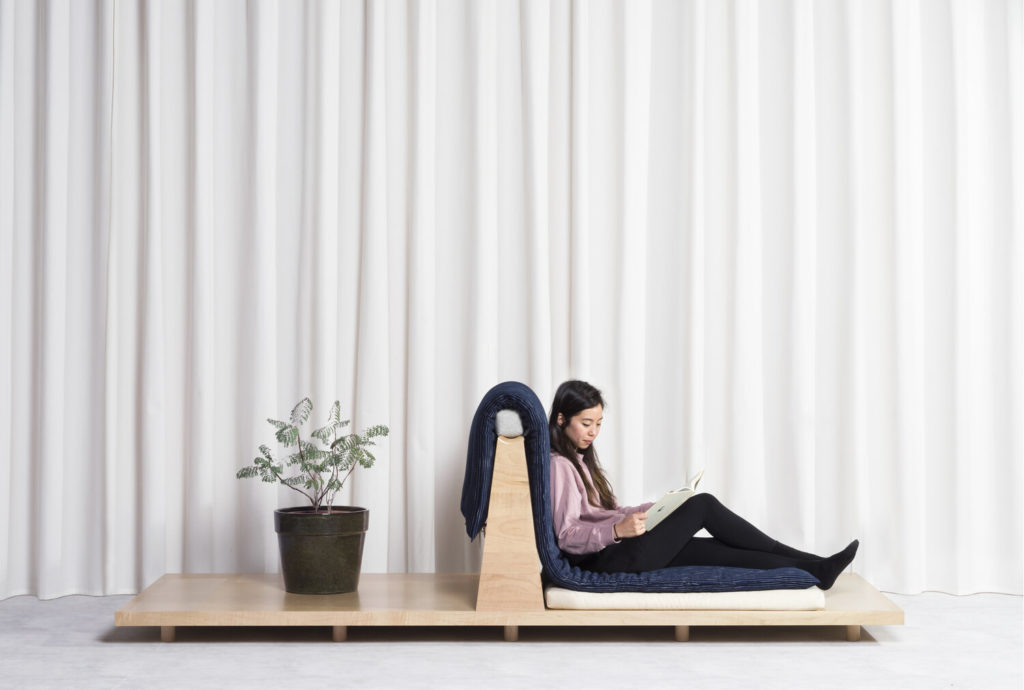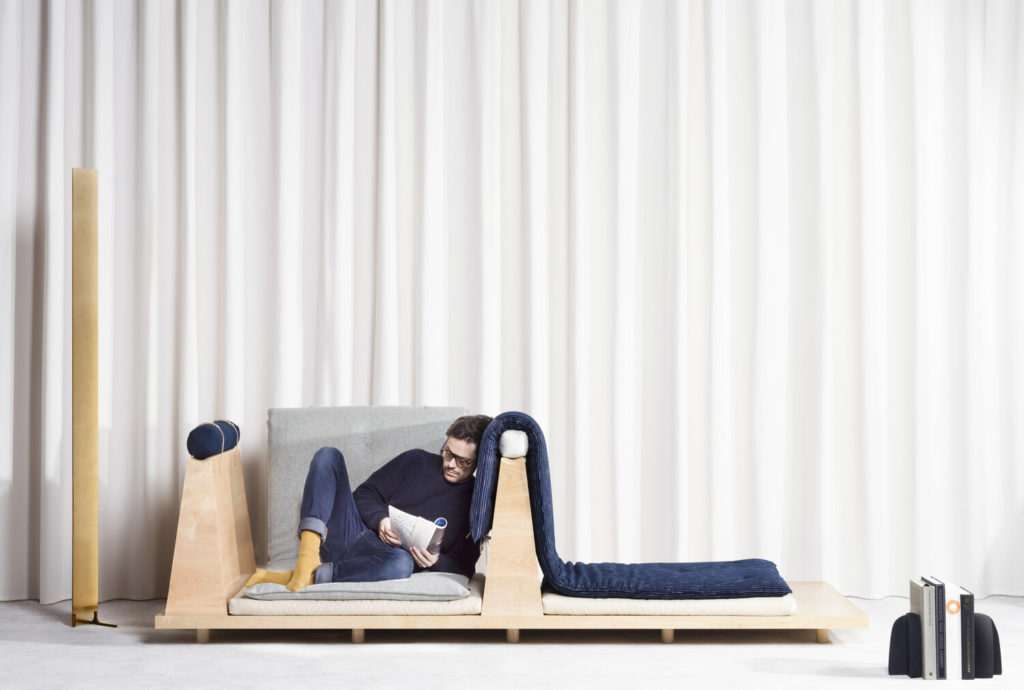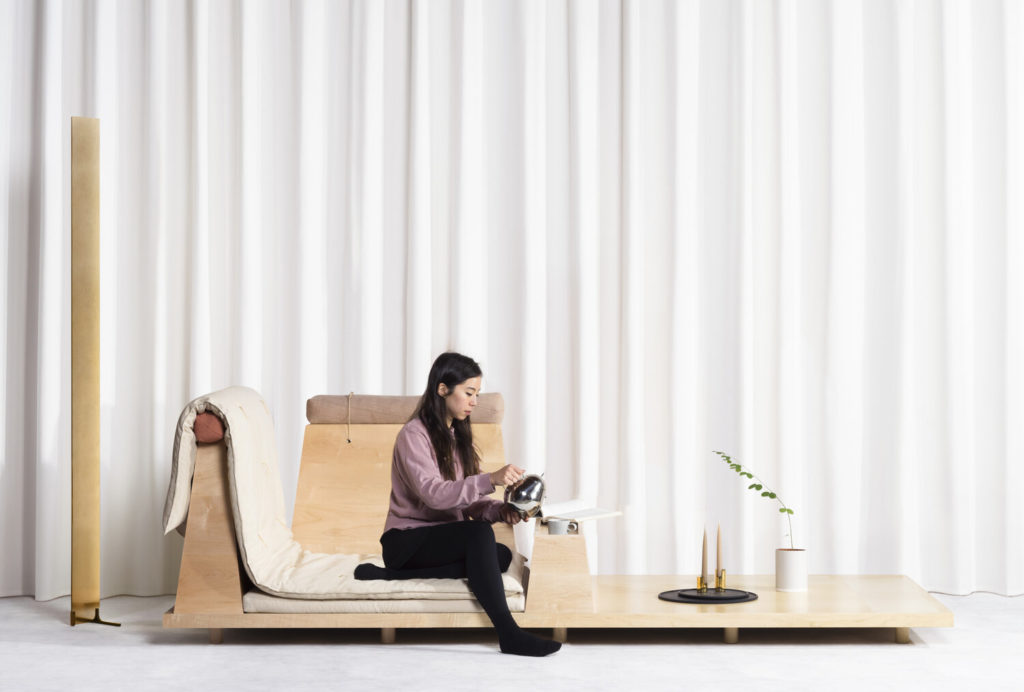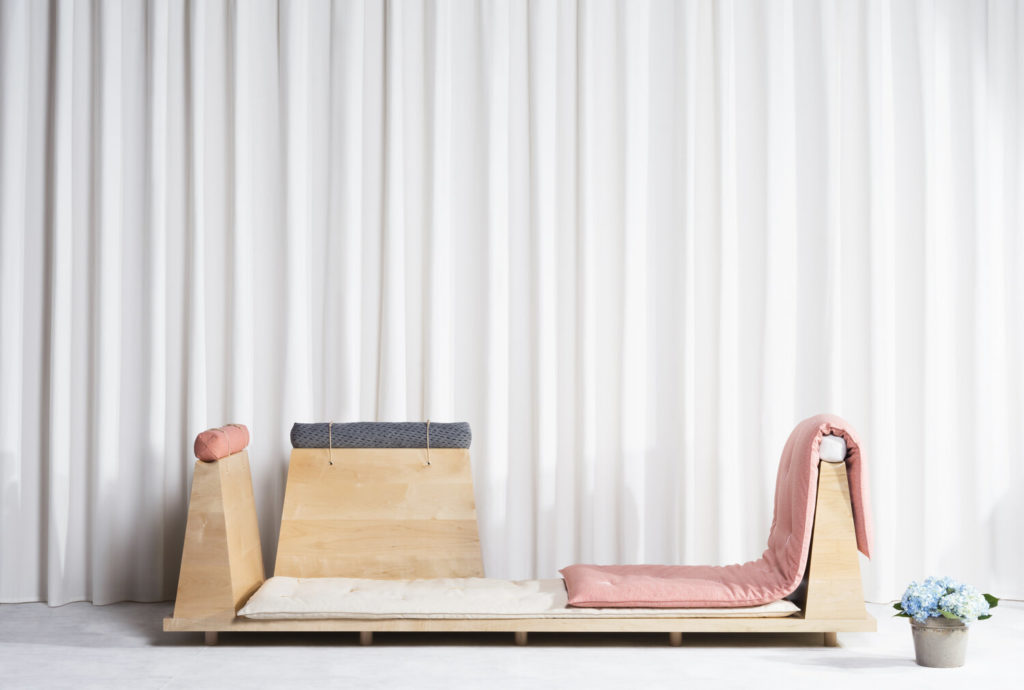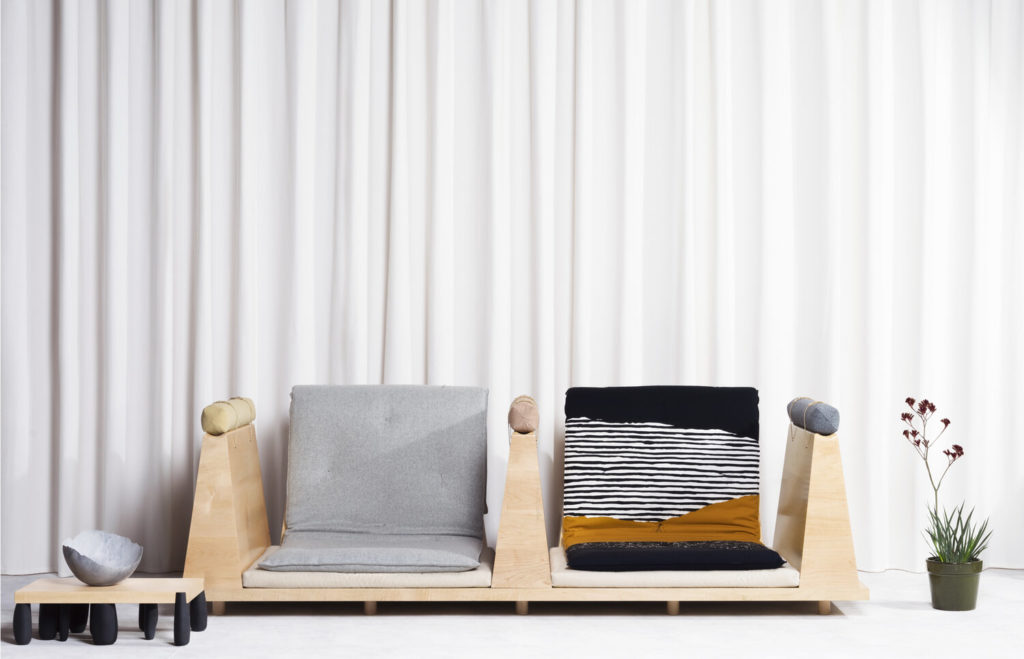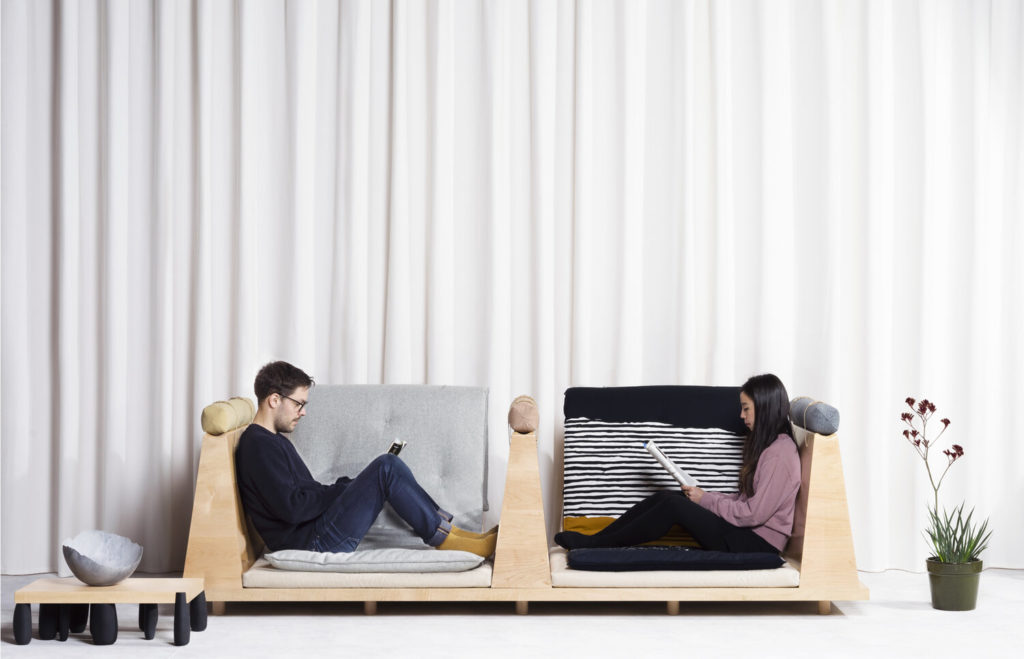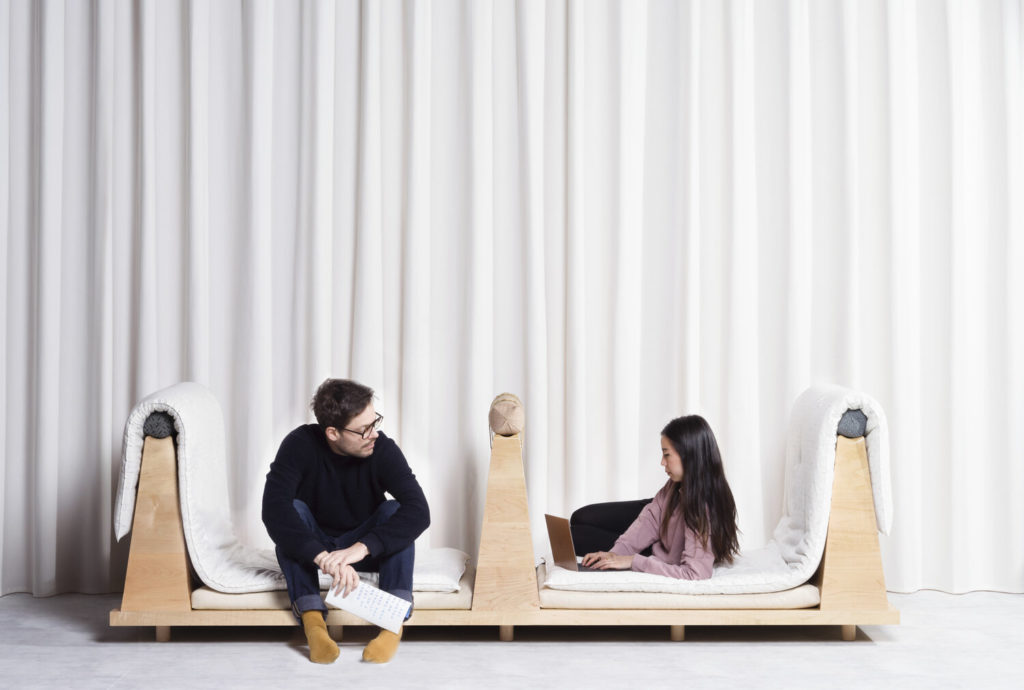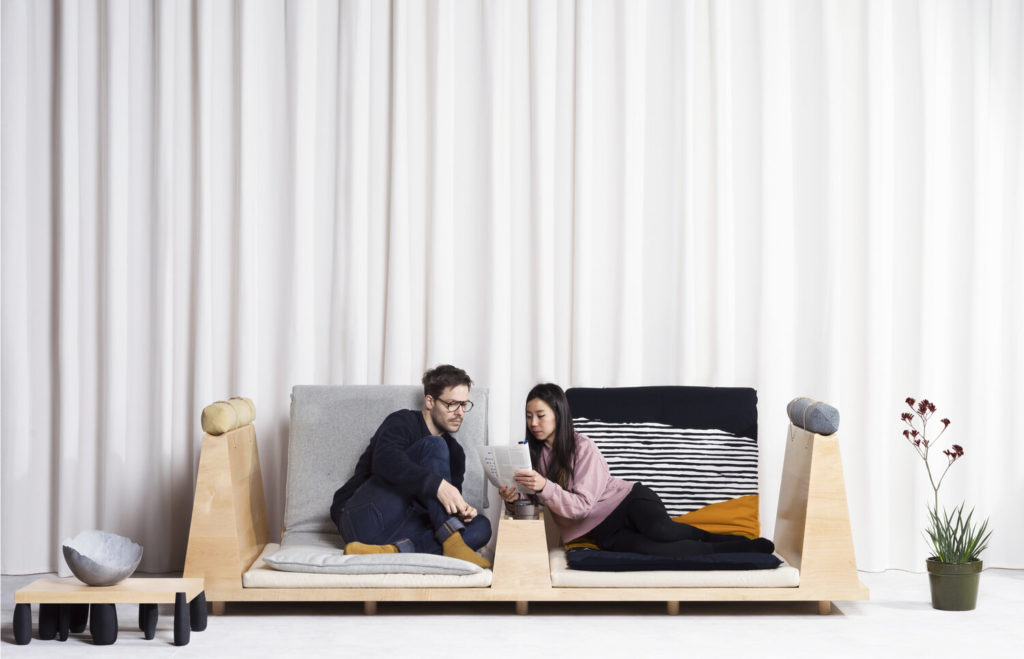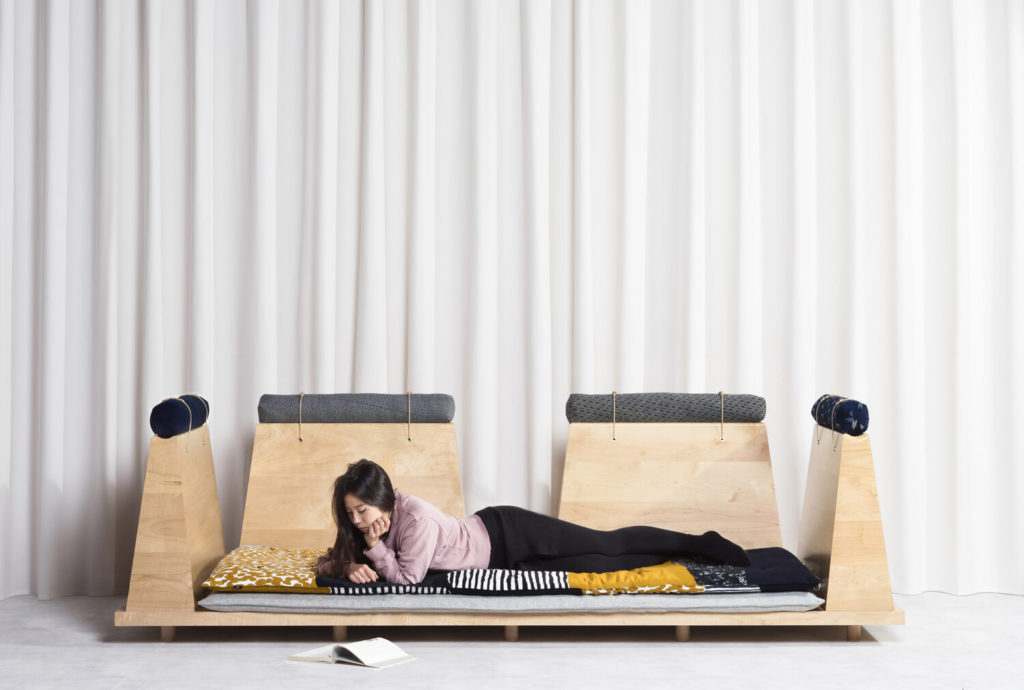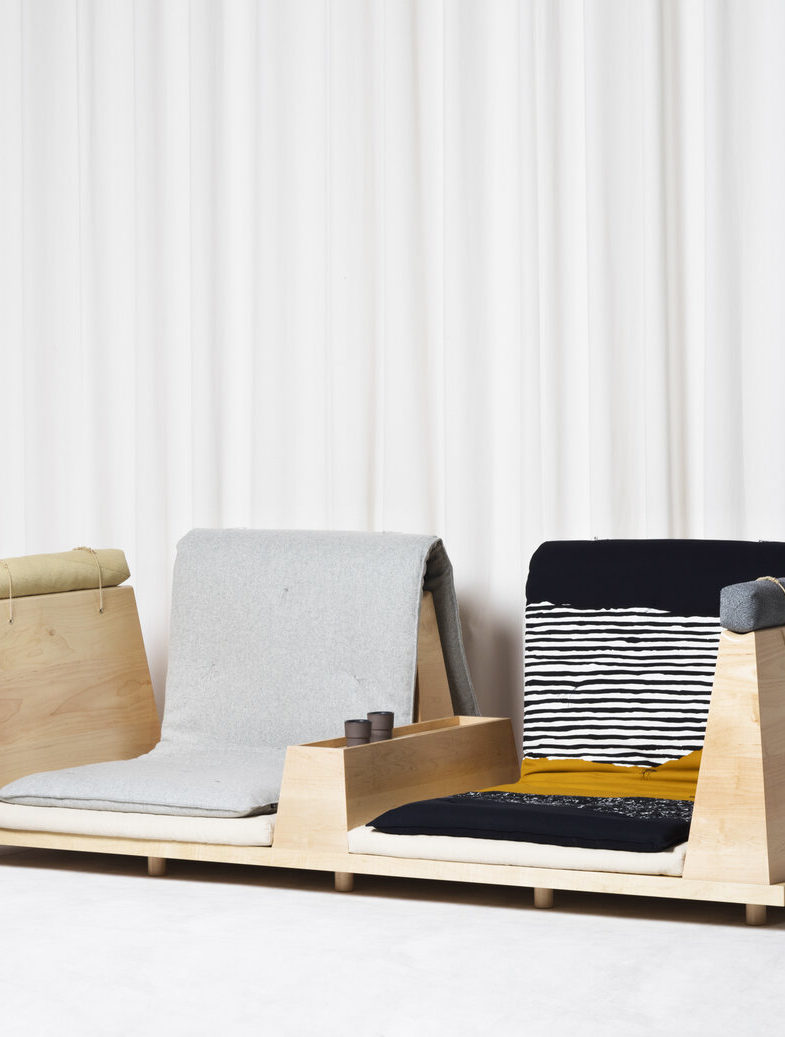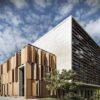The California-based design studio UMÉ finds inspiration in a traditional oriental furnishing element, to create Zabuton, a flexible and customizable sofa.
In Japanese, Zabuton 座布団 designates a cushion traditionally used on tatami. With the raised floors being popularized in the 17th century, Japanese society as a whole adopted tatami living as the driving design principle of housing design, Zabuton were used to bring comfort to the seating of the nobility. The Zabuton sofa is a take on re-introducing this traditional Japanese living into a modern piece of furniture. It is designed as a frame for a variety of traditional cotton items – futon, zabuton, bolster. Items can be arranged in a variety of ways in order to adapt to different activities.
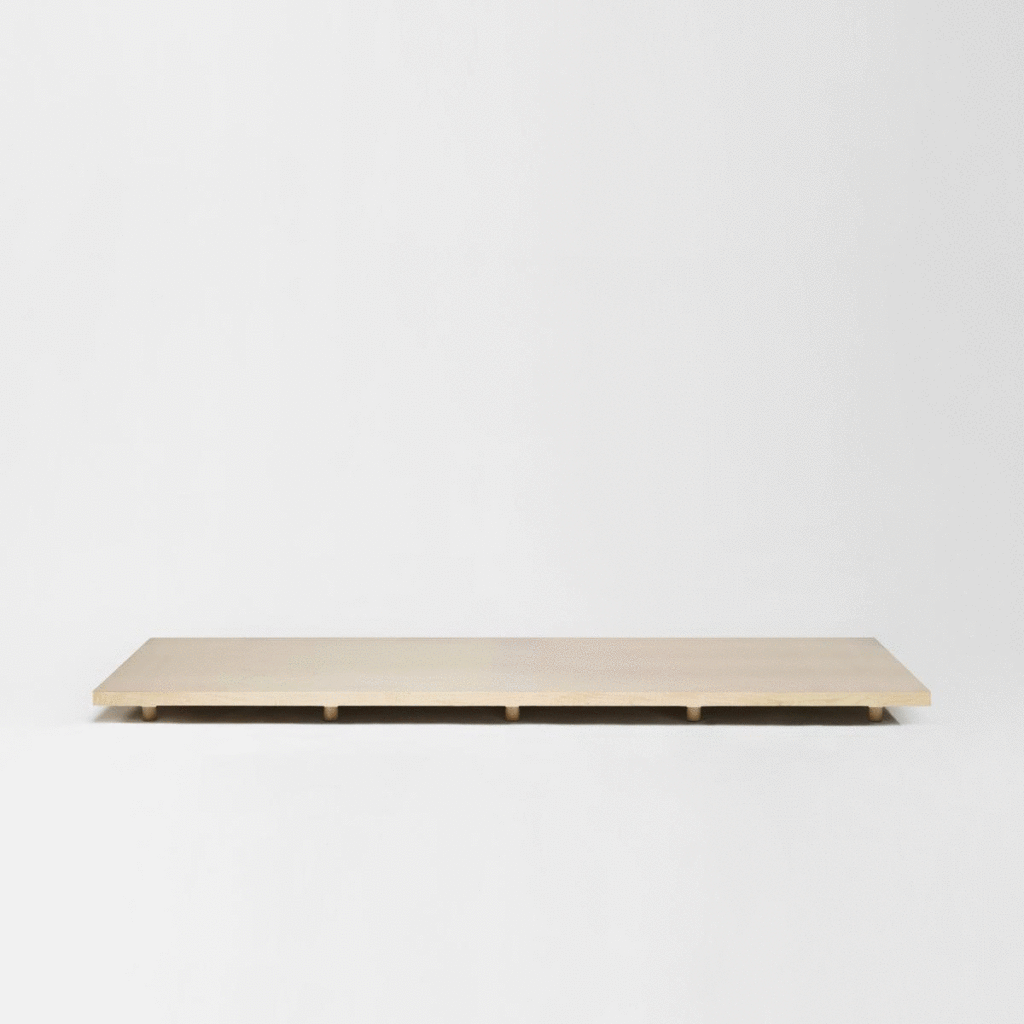
The result is an experience combining the very intimate, low, simple and un-ostentatious quality of the Japanese traditional items – and the very generous, comfortable, social aspect of modern couches.
The Zabuton was developed in collaboration with Takaokaya, a Kyoto based futon maker. Successive generations of Takaokaya have continued to nurture Kyoto craftsmanship for 100 years, creating products with soul that are true to the times and yet draw on the traditions unique to the former capital. Every step of their process is hands-on.The cotton is first massaged to create an even layer of distribution, before the futon, zabuton, and bolster sleeves are sewed. The cotton is then hand stuffed into these sleeves, producing different densities of hardness dependent on its use.
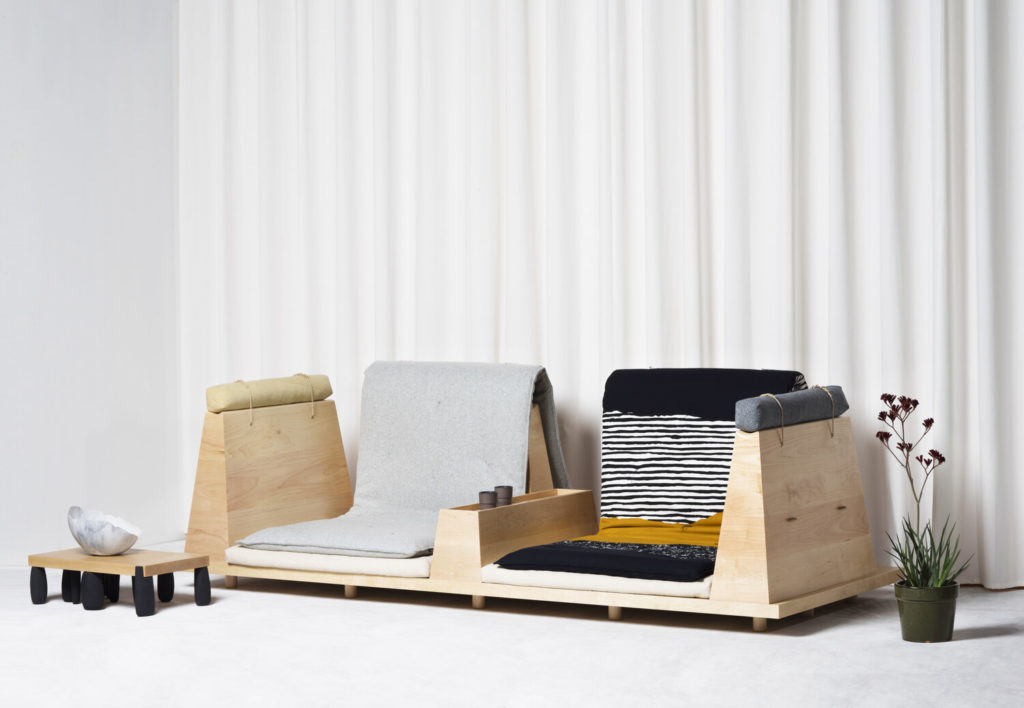
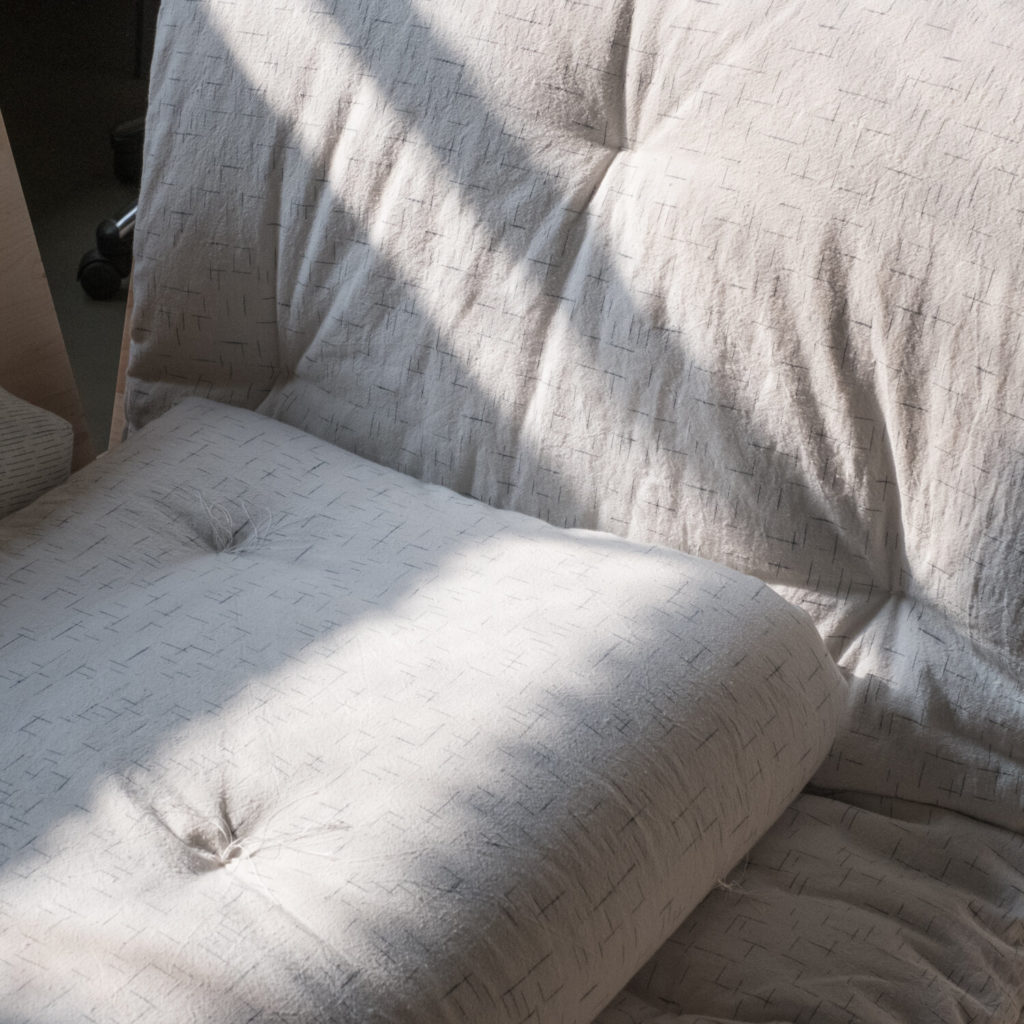
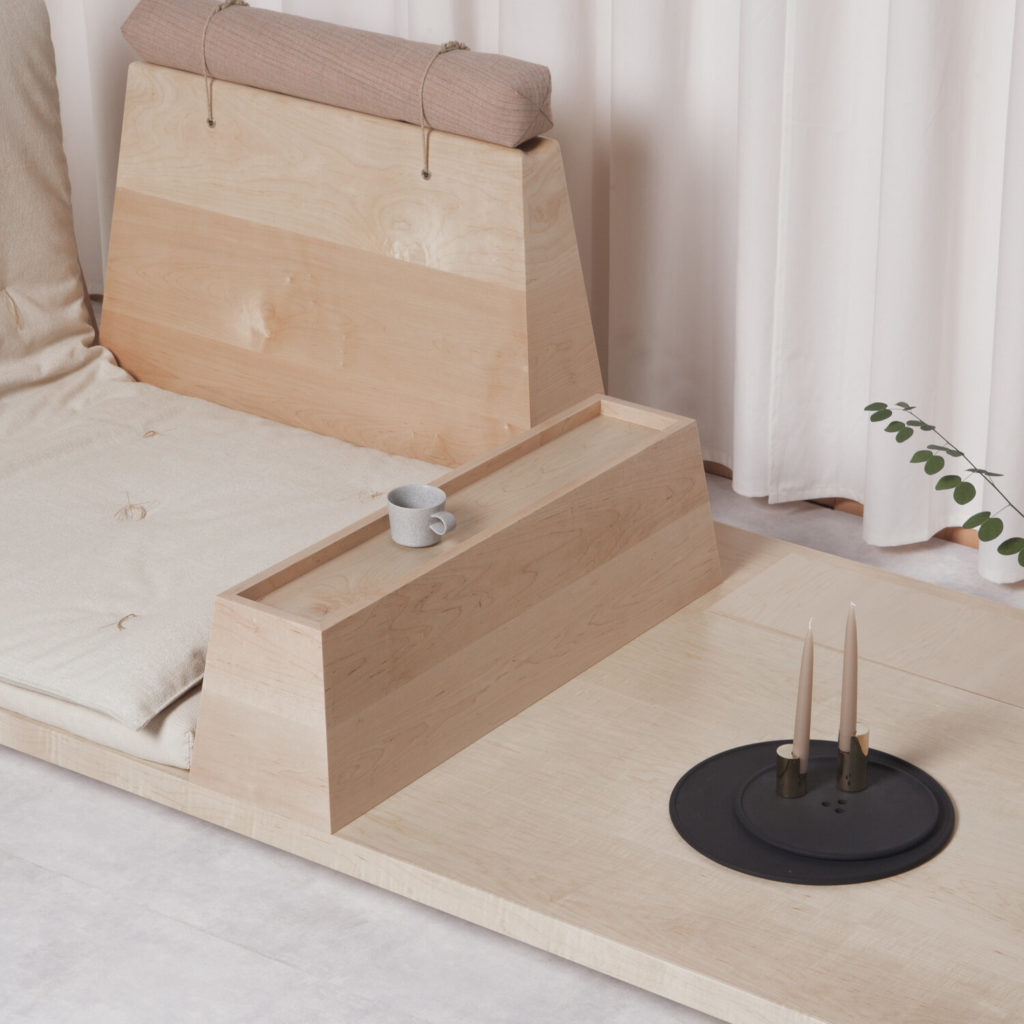
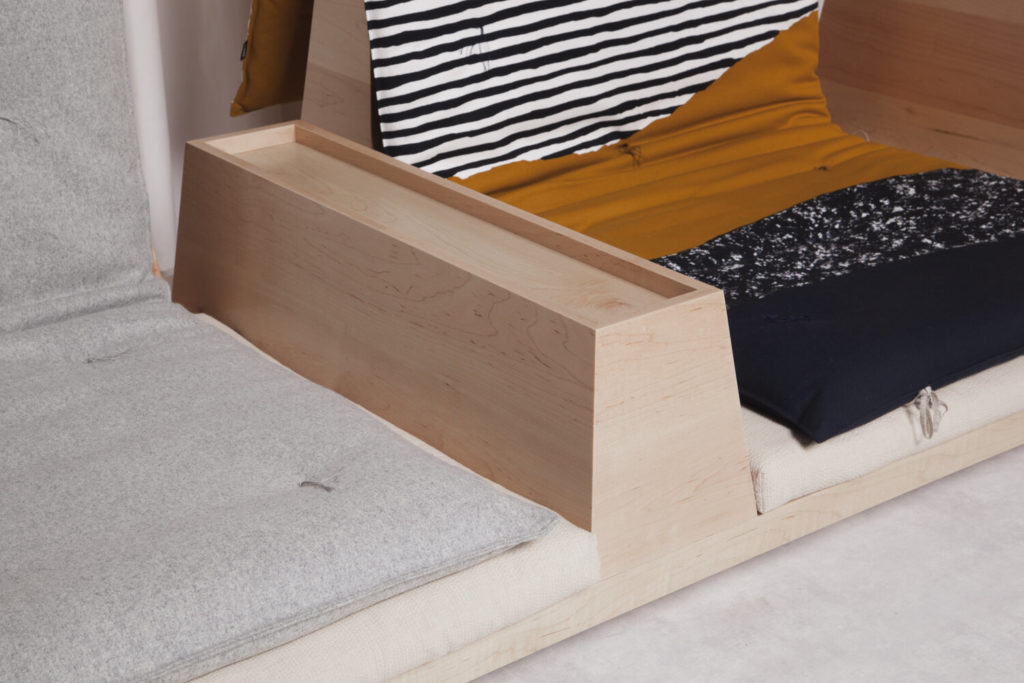
The frame of the sofa, a wooden plinth and partitions, are hand crafted in Oakland, CA. Meticulously detailed to allow the soft features to be draped and attached to the hard and clean surfaces of the wood. The wood details produce cavities for both the soft components of the sofa, as well as areas of use to stage your own belongings.
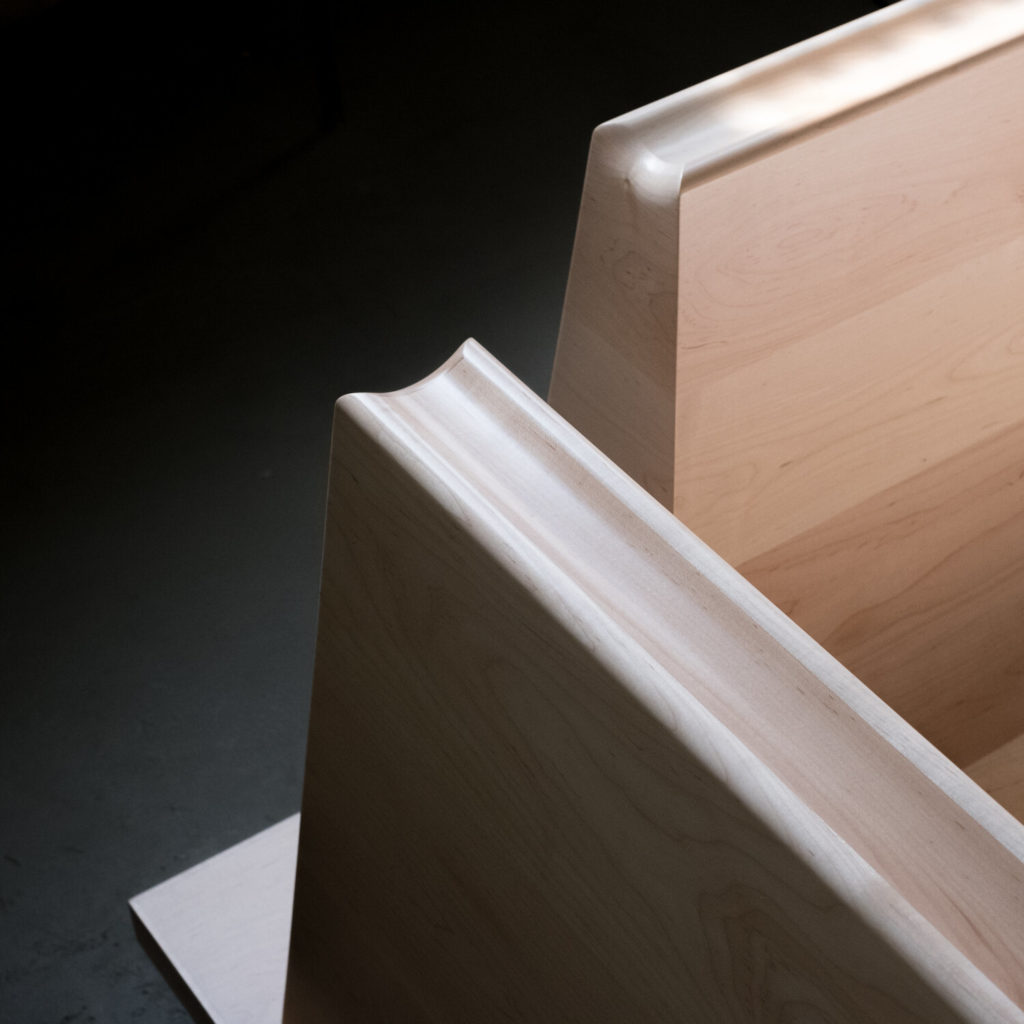
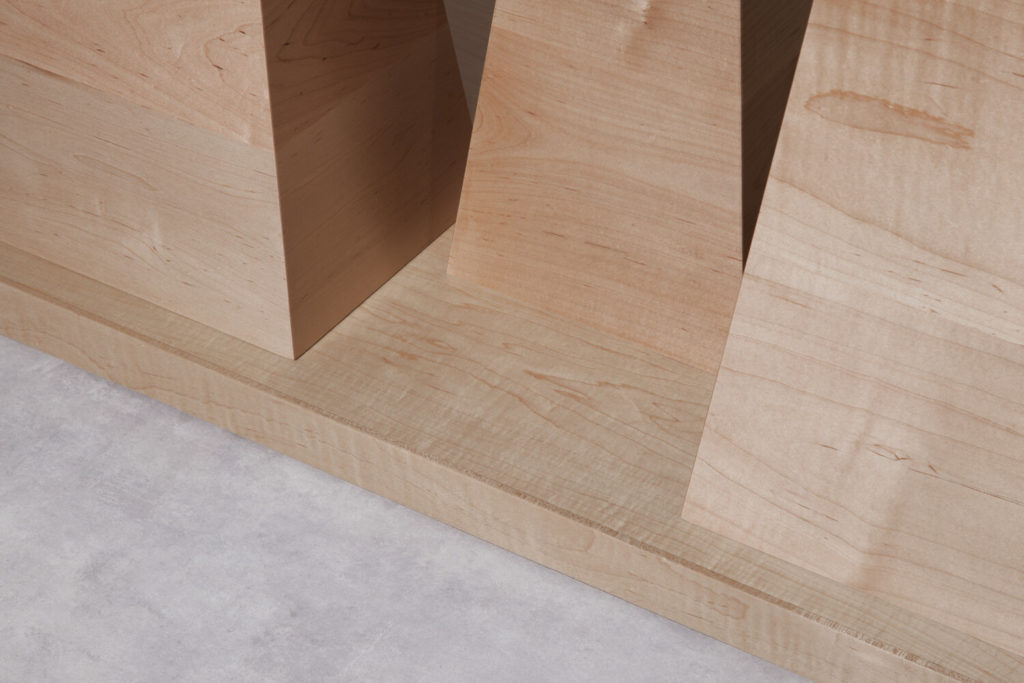
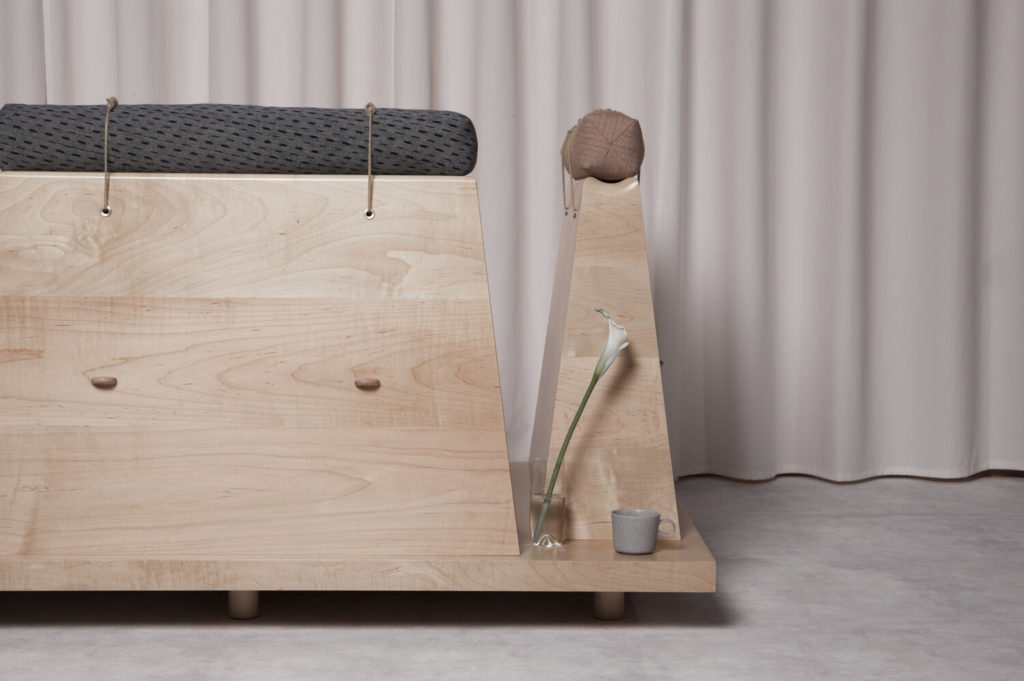
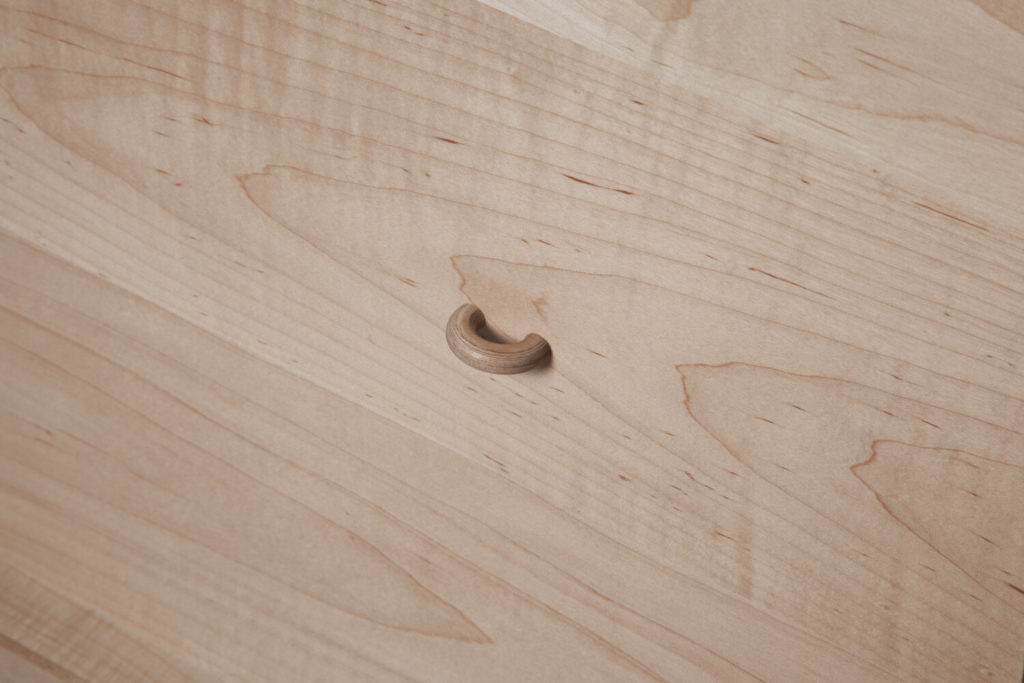
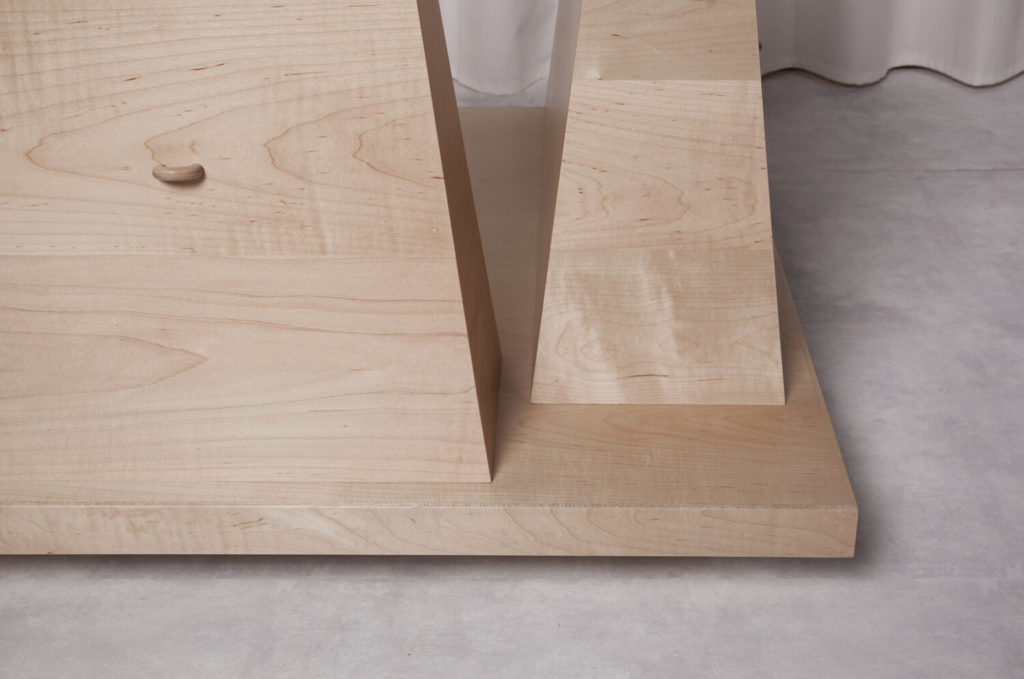
Zabuton Sofa is able to be customized through modular system of wood partitions, futon, zabuton, and bolsters. Starting with a wood plinth, the four elements can be added on in various combinations producing a very flexible system that can be changed throughout its use. Wood partitions come in two sizes, one is a full height backrest, the other is a low table. Both are bolted in and can be easily re-arranged per your desired use in your home. The amount of wood partitions used is also flexible.
Bolsters are used as the round headrests on top of the wood partitions. Color and type of textile is customizable. Zabuton are the padded layer that sit under the Futon. This extra padded layer allows for more comfort. Color and type of textile is customizable.
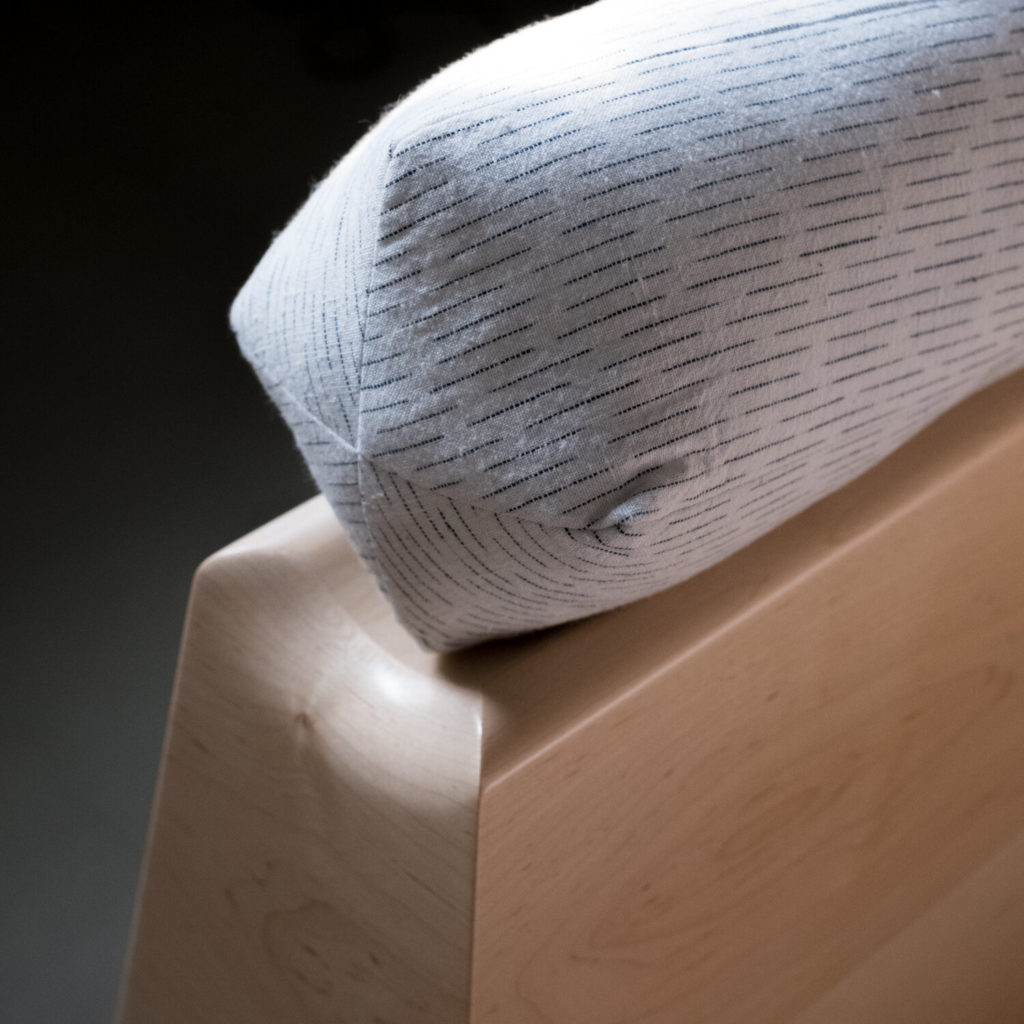
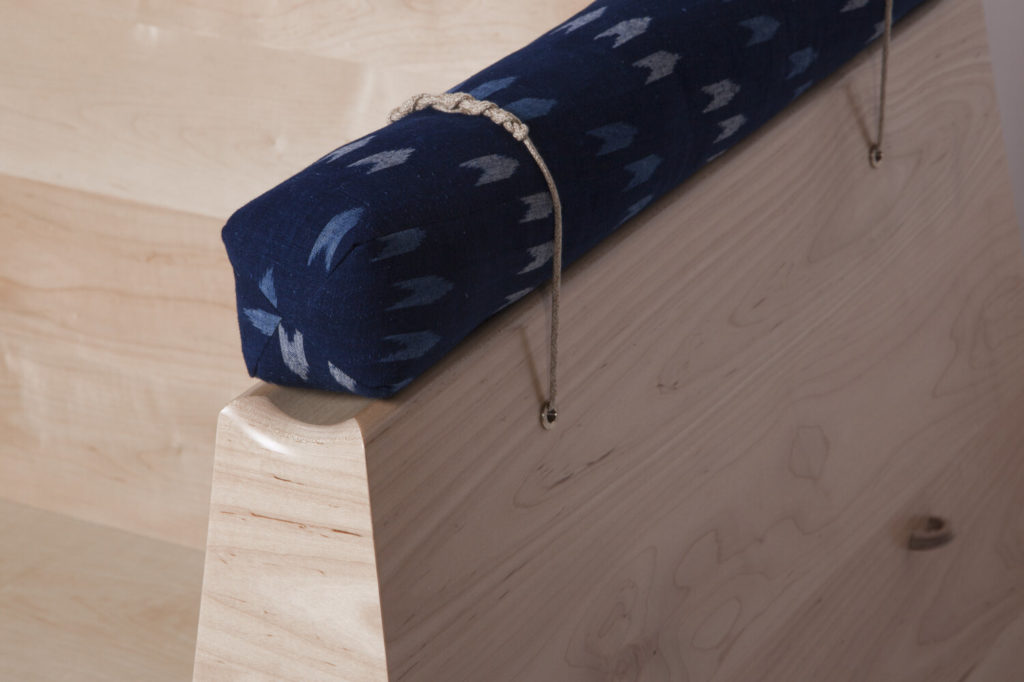
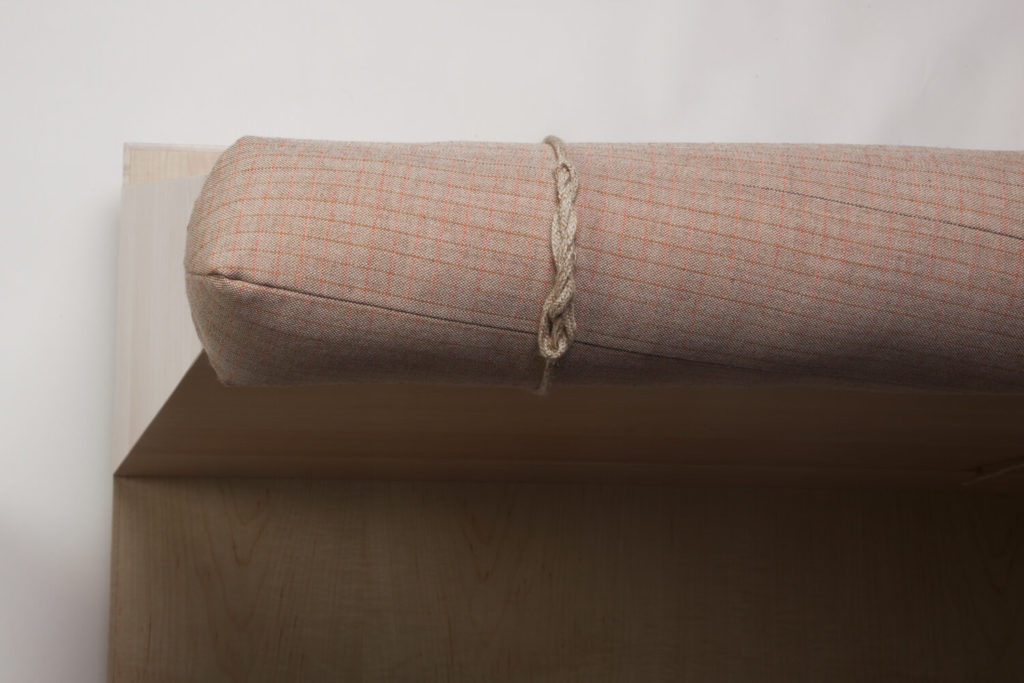
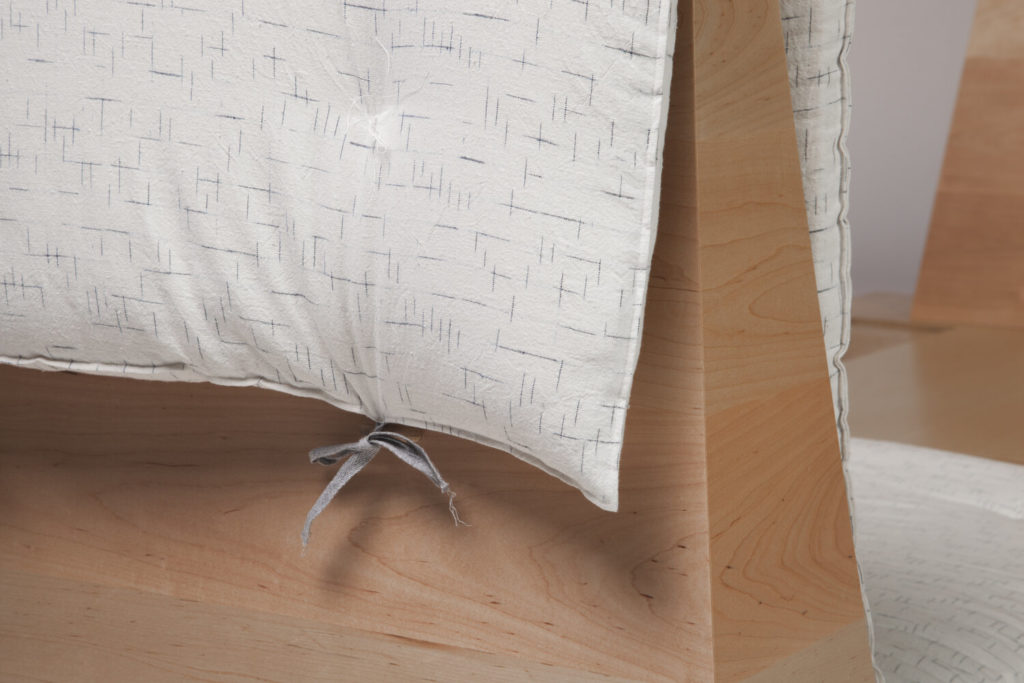
Futon are draped over wood partitions to allow for more comfort. Futon can be layered many times to produce as padded of a surface as you desire. Color and type of textile is customizable. Futon are handmade in Kyoto, Japan. Fabric collaborations include Sou-Sou, Kvadrat, and Bingo Fushiori.
Photography: William Boice
